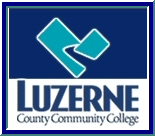|
   
  
NARRATION:
- “Narrative” means
storytelling.
- Some stories are
fictional--they deal with characters and events that the writer has
created from imagination.
- Some stories are nonfiction;
they recreate events which happened to real people.
- All stories, to some extent,
have entertainment as their purpose.
- Writers often use narrative
to do more than entertain, though; a narrative can help illustrate
some point the writer is trying to make.
- For this assignment, you
will write a nonfiction narrative to illustrate a point.
- You will find that narrative
is a useful device in both exposition (writing used to explain) and
argument because it helps support a point in a dramatic, compelling
way, a way your readers can understand.
- Of course facts, figures,
and reasons are useful support,
- but the human element in
narrative can add a powerful emotional dimension to your discussion
or argument.
- For instance, if you are
arguing for stiffer drunk driving penalties, naturally, you would
want to build a logical case using statistical evidence to show
statistics such as the number of traffic accidents and traffic
fatalities related to alcohol use.
- If you added to that
evidence the story of a friend who was seriously injured or killed
by a drunk driver, your audience’s emotions might be stirred in a
way they would not be by statistics.
- Whether you realize it or
not, you have in your memory many stories worth writing down for a
purpose.
- Your life has been full of
dramatic moments-not necessarily the kind you see on television,
- but a kind that grows out of
real situations that are important to you and which can be important
to others.
Some
Basic Guidelines
1. Unlike the essays we have
written so far this semester, the narrative will not necessarily
begin with an introductory paragraph that makes a thesis, audience,
and purpose clear. Some narratives do begin with a “point,” but
sometimes writers find it more effective to hold off the main point
until the end of the essay. Even then, you will want to be more
subtle about making your point than you would in a strictly
expository (“explaining”) essay or persuasive essay. If you recreate
your event dramatically, the strength and power of the narrative
will carry most of the weight of making the point.
2. To make a short narrative work well, the writer must choose a
limited incident to recreate. You will not be able to dramatize a
two week vacation or even everything that happened on a weekend
camping trip; at best, you would only be able to summarize. Please
pick an event which took place in a short period of time.
3. Remember that your goal is to recreate the event, not summarize
it, philosophize about it, or reflect on its meaning. You can
certainly use the introduction of your story to give the reader
necessary background information, and you can use your ending to
make sure the point is subtly re-emphasized. But most of your
narrative should be a dramatic recreation of the event. If you use
your words like a video camera, you can make the story come alive
for the reader and make him/her feel as if the event is really
happening.
Make a Plan
- Once you have received
approval for your topic and purpose, you can make a list of the episodes that
make up your story. Gather details to dramatize each episode.
- Then look over those scenes.
Mark the climax scene with an asterisk. Decide which other scenes
need full development because of their importance to the story.
Which scenes are less important and deserve less detail when you
write?
- Finally, are you ready to
look at some student writing? For samples of various student essays,
go to
http://www2.hn.psu.edu/faculty/jmanis/bof.htm (used with
permission). Several essays are organized around narration, while
other essays use narrative paragraphs to recount specific events.
- Next, locate the Web site
http://www2.hn.psu.edu/faculty/jmanis/palimp.htm to view Volume
8 of the Palimpsest Review, the student literary publication for the
Pennsylvania State University campuses outside the University Park
main campus. This Web site is used with permission of the editor-in
chief, Jim Manis of the Hazleton Campus. All of the short stories
and poems published are the products of students enrolled on Penn
State campuses during the academic year prior to the semester of
publication. As you read through the selections you will notice that
narration is used quite often in various short stories. It is
sometimes used as the organizational pattern for an entire story, in
other selections, it is used to recount a specific event which is
important to the development of the story.
 
      

© 2010
Luzerne County
Community College makes this Web site available
to members of the community
for educational purposes, but it does not necessarily endorse the
items published here.
|